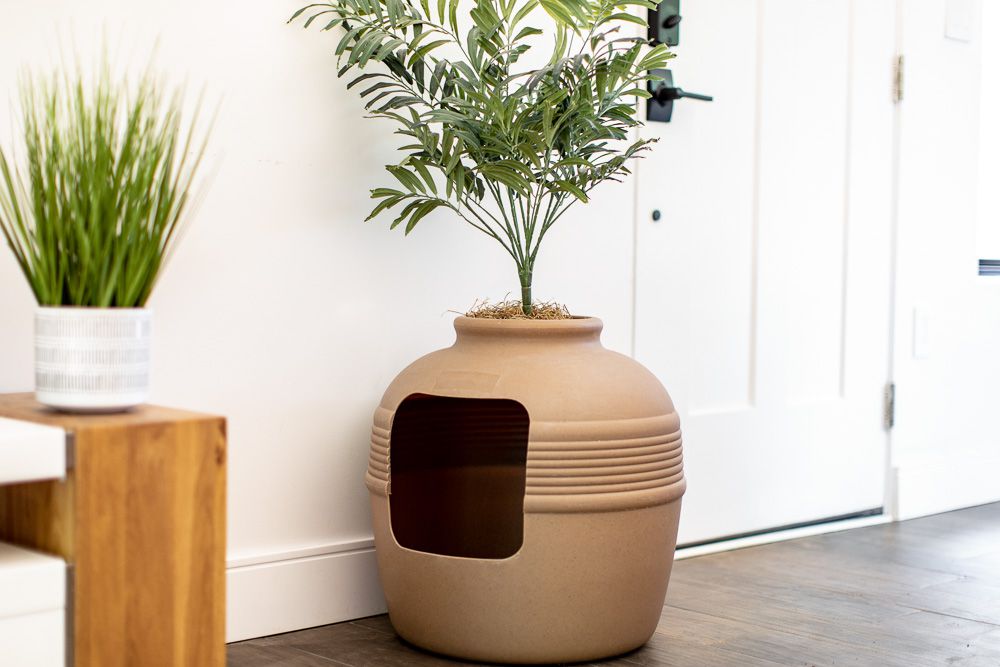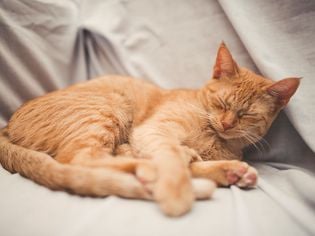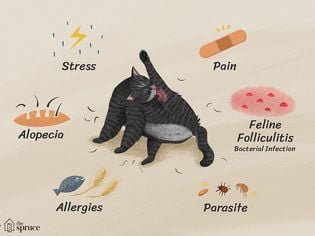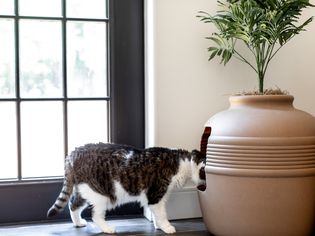You have a new kitten or have just welcomed a cat into your home, so now you need to cover the bathroom basics. You need a litter box, likely more than one. Where is the ideal spot (or spots) for it?
Factors to Consider
Cats tend to be very fussy about their litter boxes, and the correct placement is of extreme importance.
First, you should know the rule of thumb for litter boxes is "one plus one." You should have one litter box per cat, plus one extra. The reason for the extra one is that some cats refuse to poop and pee in the same litter box.
With a large number of cats, you probably should have two or three extra. Some cats hate to share a litter box with other cats. The future implications can be worrisome if you do not plan accordingly. Cats may spray and soil around the house and once they start doing that, it can become a hard habit to break.
Watch Now: Our Very Best Tips for Litter Box Placement
Potential Locations
Obviously, you do not want a litter box in the middle of your living room or in the kitchen next to the cat's food dishes, so where do you put it?
- Private location: Cats like privacy when they eliminate, not because of modesty, but because of a primal fear of being ambushed by an enemy when their guard is down. A guest bathroom would be ideal, or the closet of a guest bedroom. If space is a problem, consider using an inexpensive screen in the corner of a living room or bedroom.
- Quiet location: Try to avoid a busy thoroughfare in your house, and if you put the litter box in a laundry utility room, place it far enough away from appliances, so that the noise from washers and dryers do not stress the cat.
- Away from food: Aside from sanitary reasons, respect your cat's fastidious nature by keeping the litter box separated from his food dishes.
- Do not trap the cat: Some cats like to play pouncing games with other cats, and will lie in wait to intimidate the cat as he tries to leave the litter box. Put the litter box in a location that will eliminate this possibility, especially if their litterbox is the top-entry type.
- Do not make them climb stairs: Although most cats will freely roam up and down stairs, if you have young kittens or very old cats, forcing them to climb stairs (up or down) to use the litter box may lead to litter box avoidance. Particularly avoid dank, dark basements, which may be subject to mold and bacteria. You may need litter boxes on all levels of your house if you have several cats, but otherwise, if you only have one box, do not place the only box in a location that will require frequently going up and down stairs.
- Keep the doors open: Even if you have found the perfect spot for your litter box/es, the effort will be wasted if you forget and close the doors to those rooms. Make sure your cats can always reach a litter box.
- Consider litter box furniture: There are many companies online that provide attractive furniture designed to hide litter boxes from very attractive wooden pieces to simpler bamboo cabinets. If you are really cramped for space, one of these might be a viable alternative to a litter box in a bathroom.

The Spruce / Ana Cadena
Related Article

Can Dogs Eat Raw Chicken Feet?
Many pet stores stock raw or dehydrated treats for dogs, including chicken feet. Some companies tou

Can Cats Eat Ham? Why Ham Isn't the Best Choice for Your Little Carnivore
You wander back into the kitchen after a family board game session and notice a few small, bite mar

What You Should Know About Kitten Teeth and Dental Care
Caring for a new kitten can be exciting, but it is also a huge responsibility. Most people know the

Chlamydia in Cats
When cats live in multi-cat homes, catteries, or shelters, they're more susceptible to the spread o

What to Do if Your Cat Is Snoring
Cat snoring can sound cute, but it might also indicate a health concern. Cats can sleep between 12

What to Do If Your Cat is Losing Hair on Their Back Legs
A cat losing hair on its hind legs is cause for concern. It's normal for a cat to be shedding,

Upper Respiratory Infections in Cats
Upper respiratory infections are very common in cats, especially kittens and shelter cats. These co

Havana Brown: Cat Breed Profile
As its name suggests, the Havana Brown cat is a brown-hued cat, but despite the name, the breed doe
About FleaFree Feline
We are a premier digital platform committed to delivering high-quality content to our readers. Our mission is to provide accurate, reliable, and engaging information that adds value to our audience's daily lives.
Our team consists of experienced content creators and subject matter experts who uphold the highest standards of professionalism. In an era of information overload, we curate content with care, ensuring our users receive only the most relevant and trustworthy information.
Beyond just reporting facts, we focus on depth and context. Through expert analysis, comprehensive research, and clear presentation, we help our audience gain meaningful insights and make informed decisions.
We take pride in being a trusted information source for our growing community of readers. Our user-first approach means we continuously adapt to provide content that meets our audience's evolving needs and interests.
Innovation and excellence drive everything we do. We're committed to improving our platform and services to deliver the best possible experience for our users.


Comments on " Where Should I Put the Litter Box?" :